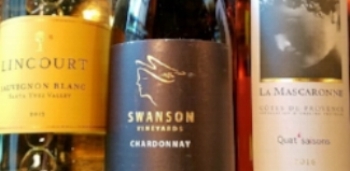Malvirà began its production in the 1950's under the guidance of Giuseppe Damonte. Giuseppe was a visionary and understood in the '50's Roero had not maximized its vineyard and, in turn, grape-growing potential. Today the estate is run by Giuseppe's sons Massimo and Roberto Damonte, who inherited their father's passion for winemaking. The brothers have made it their mission to bring Arneis to the forefront of the Northern Italian wine scene.
The Roero region is especially interesting as the land and soil here has a rich and varied history. The district of Roero is approximately 350 km and contains 23 comunes or townships. The name Roero comes from the Conti-Roero family who lived the area in the 14th century, however, the identity of the territory dates back before the year 1000. Even before the year 1000 AD, the entire "Roero area" was completely covered by sea. This history gives us the sandy and calcareous soil that is found throughout the area. In fact, it’s quite common to see fossils poking their heads out of the many vineyard sites.
Now for the wines! Descriptions below:
Arneis Spumante NV - 100% Arneis from the Malvira estate vineyards vinified as a delightful methode Charmat! Made in the Trinità vineyard in calcareous clay. Fermentation and maturation in stainless steel tanks for 6 months, and after the prize de mousse more 4 months on yeast. Alcohol sits at 12%, pale yellow color with a white peach, spring flowers, slightly herbaceous bouquet. The palate is savory, balanced and pleasantly vibrant with a dry finish and no residual sugar. Perfect as an aperitif, it pairs well with pasta, light summer salad, fish, seafood, fresh cheeses and chicken dishes.
Arneis 2016 - 100% Arneis from the Rensio, Trinita, Salietto, and Bordoni vineyards grown in calcareous clay and sandy soils at 300 meters above sea level. Fermentation takes place over 10 days in temperature-controlled tank, followed by 4-8 months in stainless steel before bottling. Elegant and aromatic, Malvira's Roero Arneis is a vibrant and complex white that shows notes of citrus, white flowers, melon, peaches and lemon with balanced acidity and a long finish. It is the perfect pairing with mild cheeses, light antipasti, fish and shellfish.
Roero Arneis Vigna Trinità 2015 - Grape Variety: 100% Arneis made from the Trinità vineyard. A calcareous clay with sandy parts, it is harvested in September. Then fermentation takes place in stainless steel tanks, then 90% is aged for 6 months in stainless steel tanks and 10% in French oak for 6 months. A bright straw yellow color with a floral, fruity, and mineral bouquet. On the palate it is fresh and fruity, with golden apples, citrus, and flint stone with the alcohol sitting at 12.5-13.5%. It pairs excellently with fresh fish, soups, pasta and fresh cheeses.
Barbera d’Alba S. Michele 2014 - 100% Barbera This vineyard is located in the historic hills of Canale, and has a little church on top, dedicated to the patron saint, Michael. The soil is made of calcareous clay, and is especially good for cultivating Barbera. The vineyard is composed of 80 year old vines, and the exposition of the vineyard is south-facing while its altitude is 300 meters. The vineyard measures 1 hectare. Both of our Barbera d'Albas; our Superiore and San Michele come from this vineyard.
Roero Red 2015 - 100% Nebbiolo from 25-35 year old vines in the Trinita and Renesio vineyards planted at 300 meters above sea level. Fermentation occurs in stainless steel tanks, followed by aging for 20 months in French oak (50% new, 50% used). Wine rests in bottle for an additional 12 months prior to release. Color: intense ruby redPerfume: violets, strawberries, raspberries, andblack currents Flavor profile: persistent with approachable tannins, intense fruit with hints of vanilla Alcohol: 13,5% Pairing:pasta, roasted and grilled meats, poultry and
medium aged cheeses
Birbet Brachetto NV - 100% Brachetto from the Trinita, Prarino & Saglietto vineyards situated at 300 meters above sea level. Fermentation in stainless steel for 36 hours followed by secondary fermentation in autoclave. Residual sugar sits at 100g/L and vines are planted on calcareous clay soils. Harvested in September, fermentation in stainless steel tanks followed by second fermentation in autoclave. This wine is a light reddish pink with strawberries, berries, and rose petals on the nose. Sweet strawberries fill your palate with a low alcohol of 4.5 - 5.5%. Pairing suggestion would be as a digestif with fruit desserts, panna cotta, strawberries and rhubarb.























